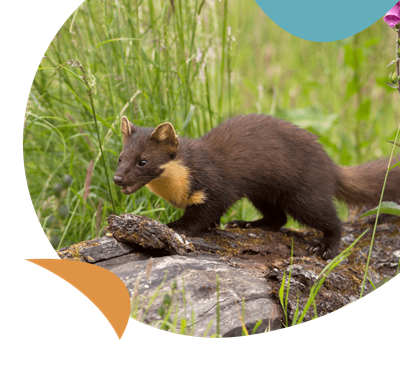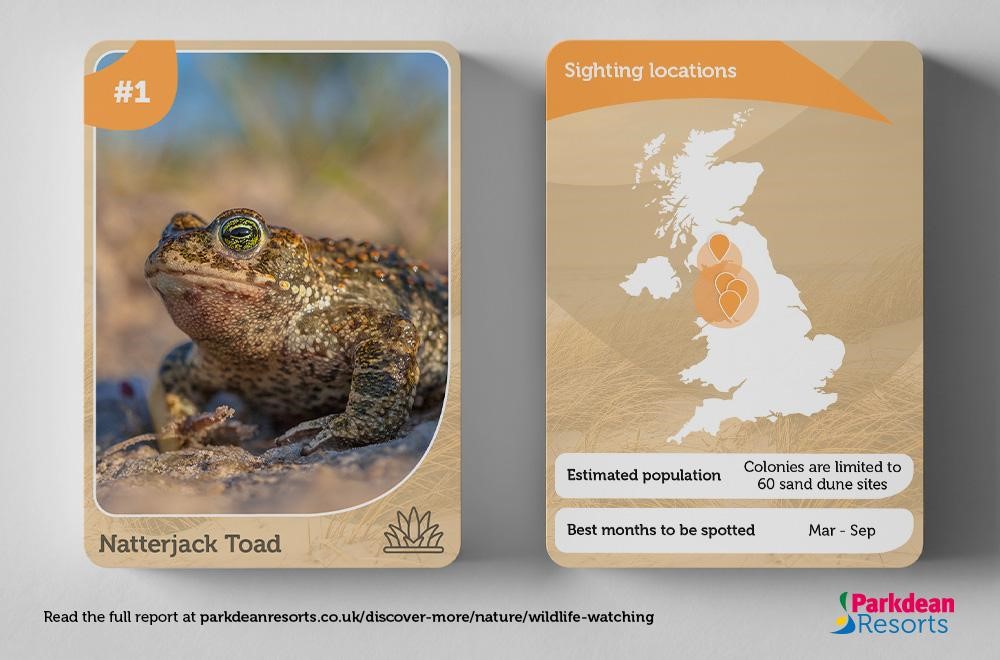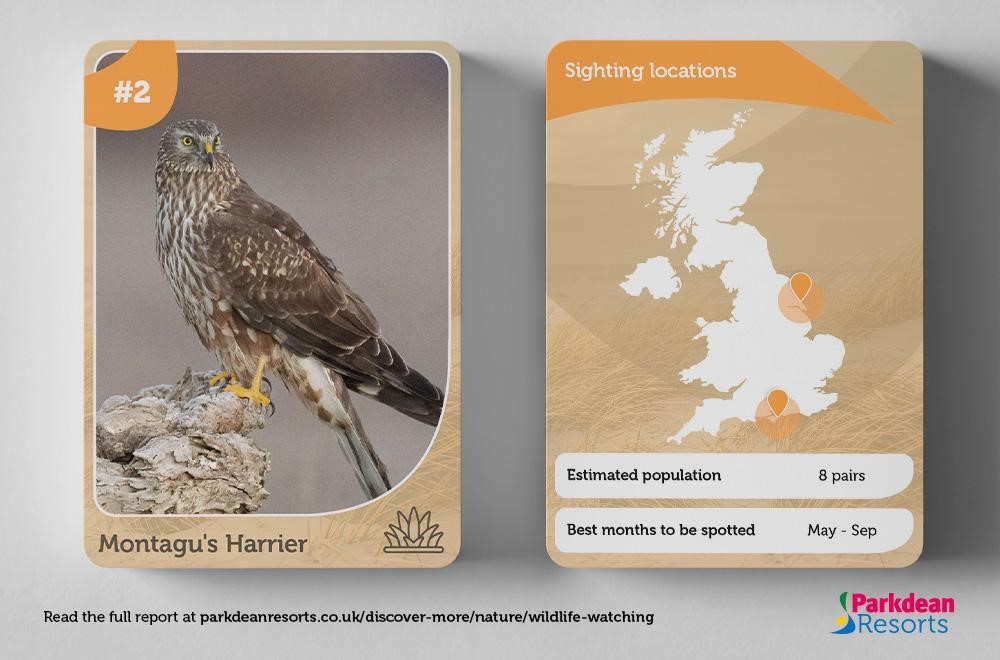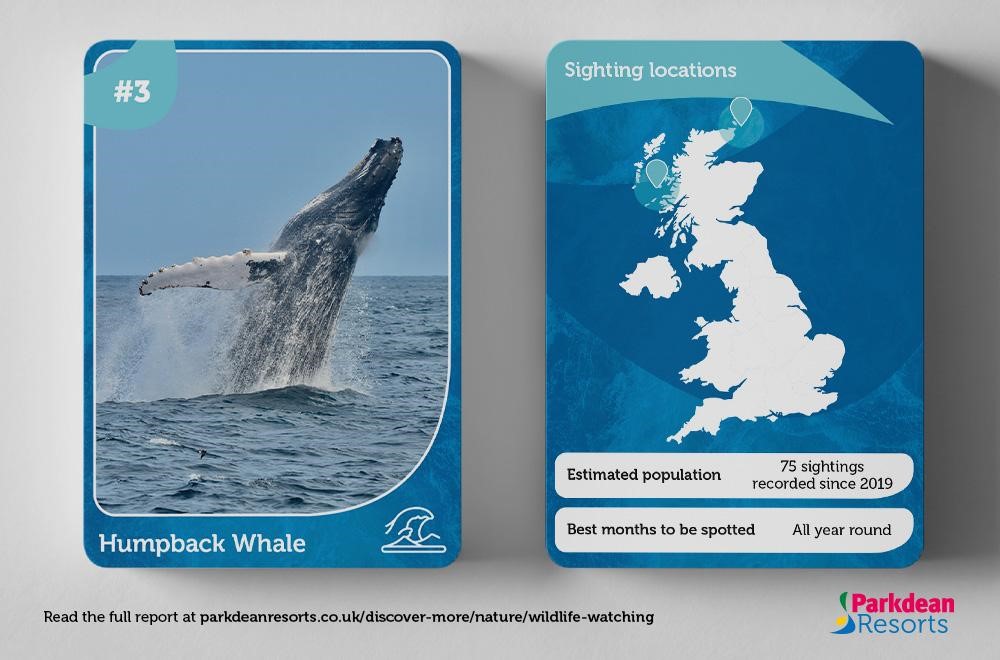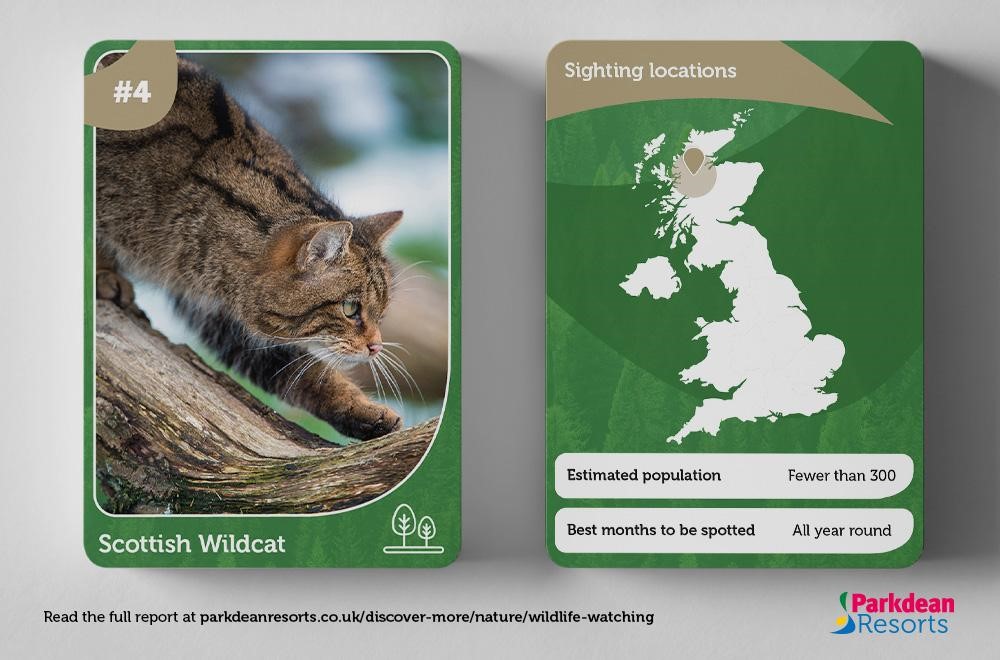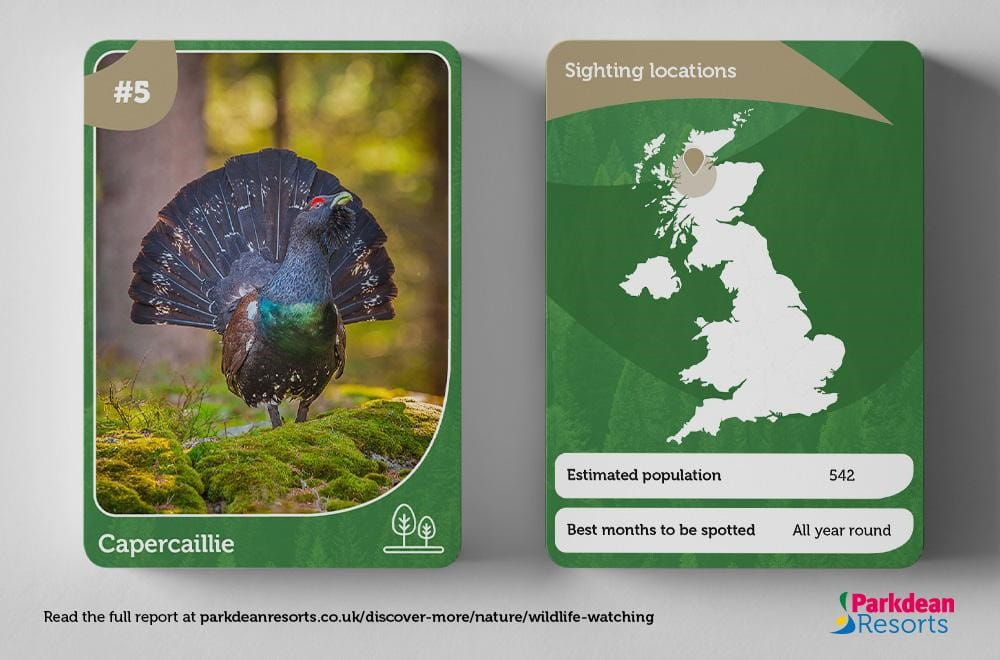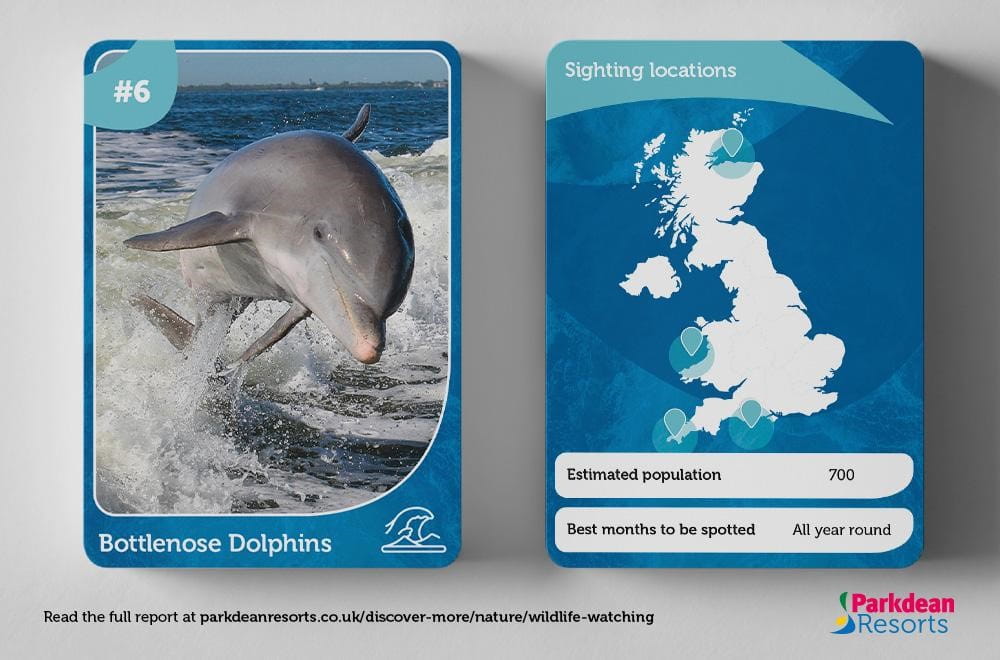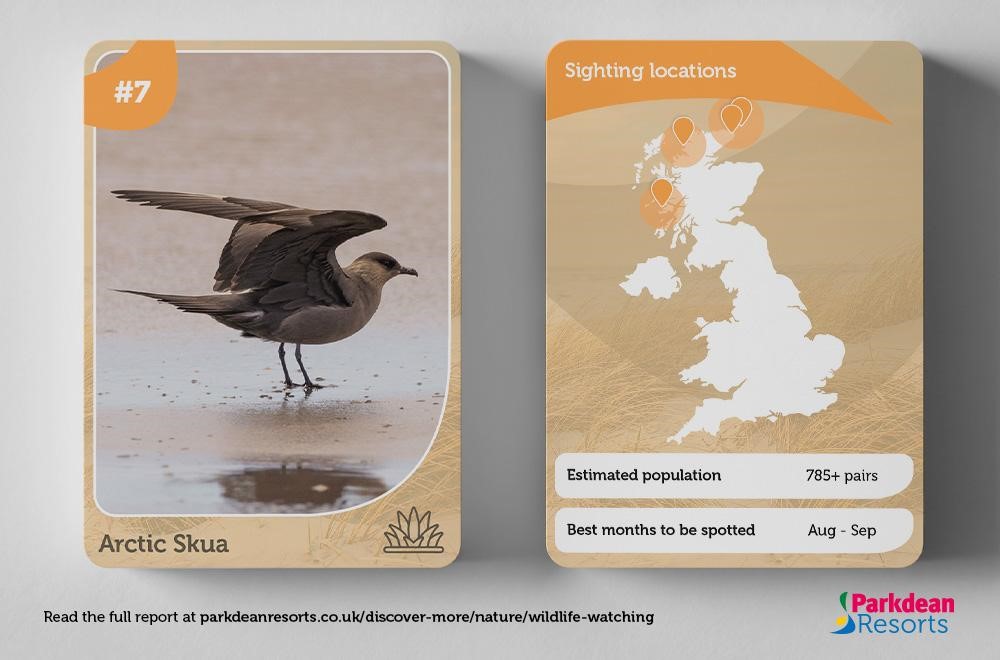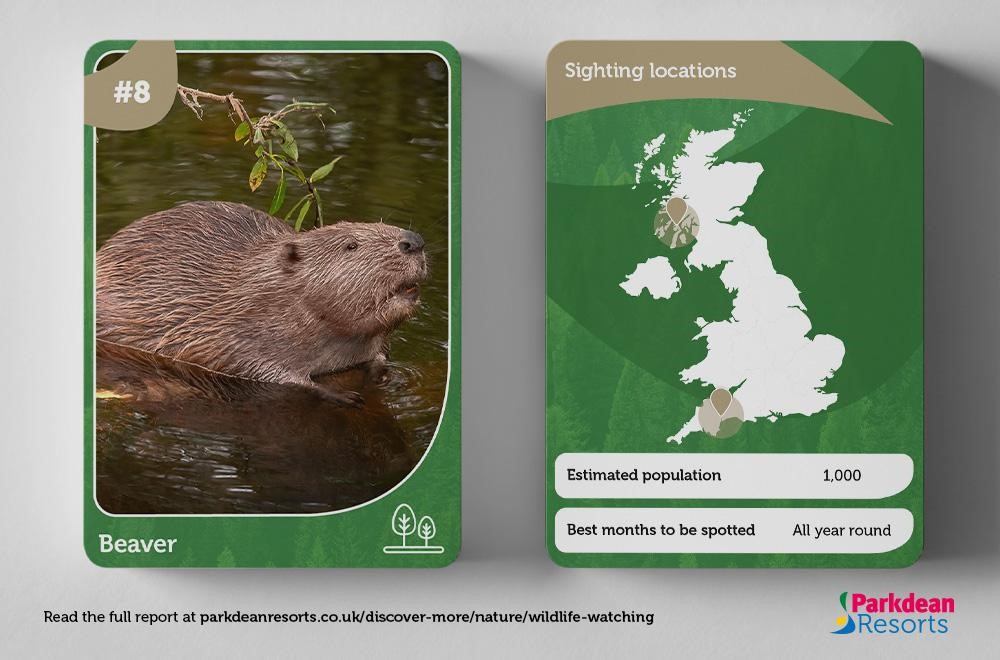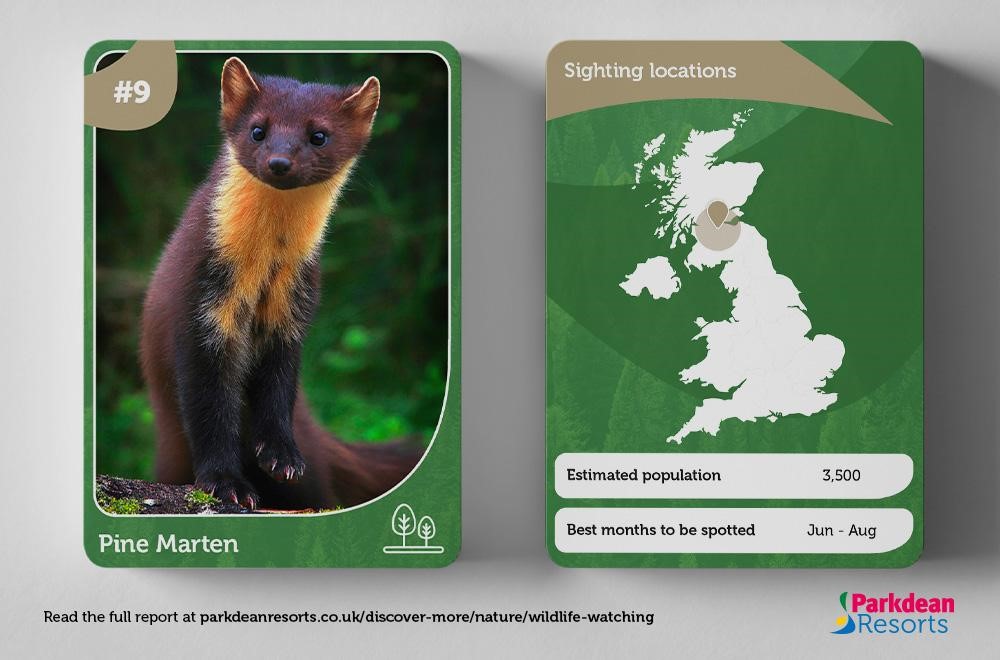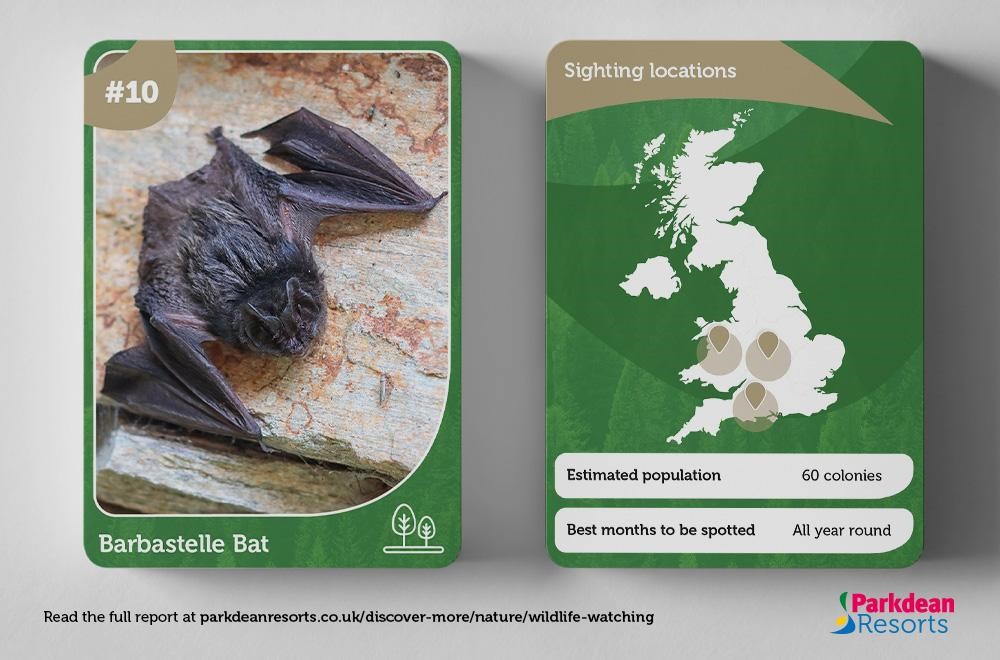By Parkdean Resorts on 27/02/2023
There's wildlife all around, and as humans, it’s our responsibility to protect and preserve the creatures living among us. A report from the Natural History Museum sadly states that the UK has only 50% of its biodiversity richness compared with historical levels.
That said, our data suggests there has been a 16% increase in online searches for ‘UK wildlife parks’, a 321% increase in ‘bird-watching gifts’, as well as a 22% increase in ‘whale watching’, highlighting interest is not wavering and many Brits are still eager to learn more about our gorgeous wildlife.
Wildlife watching is the perfect way to incorporate ‘slow travel’ into a UK holiday, a fantastic flourishing travel trend that’s seen online searches for ‘how to slow travel’ soar by 116%! Slow travel encourages educational and meaningful experiences where you take your time to soak up all that a place has to offer by embracing the moment. Whether you spot any wildlife or not, exploring the different terrains that you encounter during your journey is a great way to make the most of your trips.
With this in mind, we’ve researched the rarest and most endangered wildlife in the UK in partnership with our ESG team. As a business, we are dedicated to caring for our parks, people and planet. ESG stands for environmental social governance and our environmental priorities are reducing our carbon emissions, using sustainable resources, and creating spaces for nature. This is in addition to caring for our people and communities and ensuring that we run our business responsibly. Find out more here and read on to unpack what we found.
Revealed: the UK’s wildlife on the brink of extinction with estimated population figures as low as 16
Based on estimated population numbers, sightings and conservation statuses, we’ve looked at over 80 different species living in the UK and uncovered which are at the most risk of extinction and endangerment. To raise awareness of our UK wildlife on the brink of extinction, we’ve put together some top tips and tricks on how you can safely spot some of these beautiful creatures while on a weekend escape or midweek break!
| Rank | Species | Estimated Population | Conservation Status | Habitat | Months they can be seen |
| 1 | Natterjack Toad | Colonies are limited to just 60 sand dune sites | Protected | Heathland, moorland, coastal | March - September |
| 2 | Montagu's Harrier | 8 pairs | Red | Farmland, grassland, wetland | May - September |
| 3 | Humpback Whale | 75 sightings recorded since 2019 | Red & priority species | Marine | All year round |
| 4 | Scottish Wildcat | Fewer than 300 | Red, critically endangered | High areas of dense cover such as woodland edges | All year round |
| 5 | Capercaillie | 542 | Red, on the brink of extinction | Woodland | All year round |
| 6 | Bottlenose Dolphins | 700 | Protected & priority species | Coastal | All year round |
| 7 | Arctic Skua | 785 pairs | Red | Marine and intertidal | Summer on breeding grounds. Spring and autumn on passage |
| 8 | Beaver | 1,000 | Protected species | Dams in wet locations | All year round |
| 9 | Pine Marten | 3,500 | Critically endangered | Woodland habitats in tree holes or even old bird nests | Most active in summer |
| 10 | Barbastelle Bat | 5,000 | Protected & near threatened species | Deciduous woodland and areas with water (woodland streams and ponds) | April - September |
Here’s where to spot the wildlife most at risk and how you can do it safely
1. Natterjack Toad
How many are there estimated to be?
With sadly only one of two toad species left in the UK, the Natterjack toad is the rarest species of them all. Their population is limited to colonies within just 60 sand dune sites, making them an exciting and rare one to spot for wildlife watchers.
How to correctly identify?
The Natterjack toad is slightly smaller than the common toad and can be identified by the yellow stripe that runs down its back.
Where and how can you spot one?
Natterjack toads and their habitat are protected nowadays, so due to their rarity, it’s important not to disturb them. That said, you can still interact with them from afar - on warm spring nights, adult male Natterjacks make a loud raspy croak as they go in search of a mate, which can be heard up to a mile away! So listen carefully and you may just hear these toads sing! In England, Natterjack toads can be found in; Hoylake, Ainsdale Sand Dunes, North Walney and Sandscale Haws. Or if Scotland is your neck-of-the-woods, we at Parkdean Resorts have developed a habitat for this rare amphibian at our very own Southerness Holiday Park to support potential Natterjack Toad breeding!
2. Montagu's Harrier
How many are there estimated to be?
This next rare species takes us to the bird kingdom, so prepare to take flight! Sadly, the Montagu’s harrier has only 8 known pairs living in the UK, meaning that their conservation status is on the ‘Red List’ under the Birds of Conservation.
Where and how can you spot one?
Any wildlife watchers will be pleased to know that it’s still possible to safely spot a Montagu’s harrier from a distance on passage, particularly on the South and Eastern coasts of England - making for a perfect activity for any holidaymakers staying at Camber Sands Holiday Park.
How can you help?
Montagu's harrier UK conservation status is “Red”, so if you spot one, it’s important to keep your distance. You can support them from a distance by quietly watching them as they fly overhead! Also, be sure not to litter in the surrounding area to ensure that you keep their habitat clean and safe.
3. Humpback Whale
How many are there estimated to be?
The UK is seeing a resurgence in the number of Humpback whales, as more and more are being spotted in our seas every year! In previous years, our aquatic friend, the Humpback whale, would’ve been an extremely rare sight to see in the UK, but numbers are shooting up, with 75 sightings reported since 2019.
Where and how can you spot one?
Sightings of the marine mammal have been sporadic around much of the UK. That said, Humpback whales have been most commonly spotted just off the Shetland Isles and Hebrides, and they are increasingly sighted in the North Sea. If you’re lucky enough to be around one of these whales, at up to 18m in length, they're pretty hard to miss. So, the next time you’re out fishing be sure to take a good look around you, we’re sure you’ll have a whale of a time.
How can you help?
Humpback whales are under UK conservation status “Red” and are known to be a priority species. If you do spot one in the wild, make sure you maintain 100m distance and report it to your local Wildlife Trust. It’s rare for Humpback whales to approach people out at sea but if one comes close, maintain a constant speed to ensure that you do not scare them and instead allow them to interact on their own terms.
4. Scottish Wildcat
How many are there estimated to be?
There are extremely low numbers of true Scottish wildcats in the UK and they are sadly deemed to be critically endangered, with some estimates stating there are 300, or fewer, left.
Where and how can you spot one?
As you may be able to guess by the name, these cats only roam the Scottish Highlands, but as they are even rarer than their feline cousins, the tiger, the likelihood of spotting one is very low.
How can you help?
Scottish wildcats are one of the UK’s rarest mammals. A combination of hunting and habitat loss meant they disappeared from England and Wales close to 200 years ago, and now they are considered critically endangered. Wildcat Haven is an organisation that works towards preserving these kitties. Thanks to Wildcat Haven, you can donate and even adopt a Scottish Wildcat to help save this rare species!
5. Capercaillie
How many are there estimated to be?
The Capercaillie is a species of bird with an estimated total UK population of 542. The number of Capercaillies is declining very quickly, so they are considered to be on the brink of extinction and are classified as a ‘Red List’ bird.
Where and how can you spot one?
For their protection, Capercaillies are restricted to the native pinewoods of Northern Scotland, a rare and vulnerable habitat. Capercaillies are highly sensitive to disturbance, so on the rare occasion that you do see one, you must keep a good distance in order to protect them. We hope that in a few years, this could change!
How can you help?
Capercaillies are protected in the UK under the Wildlife and Countryside Act, 1981 and classified in the UK as “Red” under the Birds of Conservation Concern. Many efforts are being made to increase the number of Capercaillies, such as expanding the number of their habitats. What we can do to help is follow advised guidance including; walkers to keep dogs on their leads and bikers and hikers to stay on marked paths through the key Capercaillie’s breeding areas from the months of April through to August.
6. Bottlenose Dolphins
How many are there estimated to be?
There are estimated to be around 700 Bottlenose dolphins in UK waters, and they are known to be the biggest of their kind to cope with its chilly conditions.
Where and how can you spot one?
Yes, that is correct, you do not have to be in Hawaii to be in with the chance of spotting a dolphin from the shore, they can be seen swimming off the UK coastlines of Wales, Dorset and Cornwall! One of the best things to do at our Parkdean Resorts Brynowen Holiday Park is head out on a local dolphin spotting boat trip, where you can safely witness where these beautiful dolphins call home.
How can you help?
The Bottlenose dolphin species is protected in the UK under the Wildlife and Countryside Act, 1981. They are classified as a Priority Species, so that we can continue to share our waters with these beautiful creatures. If you do catch sight of a Bottlenose dolphin in the UK, you should report it to your local Wildlife Trust, also maintain a distance of at least 100m, especially if the group contains young calves.
7. Arctic Skua
How many are there estimated to be?
Despite its misleading name, we’re lucky enough to have an estimated population of over 785 pairs of Arctic Skua gracing our skies in the UK, so if you spot one, it’ll definitely be something you’d want to tweet about!
Where and how can you spot one?
The Arctic Skua is a large seabird, around the same size as the seagulls you see flying around on your beach holidays. Unfortunately, these birds are less common to spot and are considered a ‘Red List’ species. In the summer, Arctic Skua are most likely to be seen in the Shetland and Orkney islands, and also on some coastal moorlands of north and west Scotland. If you’re hoping to safely catch a glimpse of these birds on passage, you’ll have the most luck on one of these coasts in the months of August and September!
How can you help?
Arctic Skuas are a species classified in the UK as ‘Red’ under the Birds of Conservation Concern, so it’s important not to disturb the nests of the Arctic Skua, for both their safety and your own.
8. Beaver
How many are there estimated to be?
In the UK, there are estimated to be around 1,000 beavers. They are now known to be a protected species in England, 400 years after they were nearly hunted to extinction.
Where and how can you spot one?
While you may be a member of the Beaver Scouts, that is not the type of Beaver that we’re referring to today! Beavers are large, semi-aquatic rodents and are best known for their building skills. They are one of the few animals that modify their habitat, building watertight dams. You’re able to spot beavers safely and from a distance all year round, and have the best chances in the wild: The River Otter and Knapdale Forest in Argyll.
What is being done to help?
There are organisations such as Beaver Trust working to educate and inspire, as well as taking action by drafting a national vision and strategy to restore rivers and wildlife with beaver habitats across Britain.
9. Pine Marten
How many are there estimated to be?
Six thousand years ago, the Pine Marten was the second most common carnivore in Britain. Sadly, today it is known to be one of the rarest, with an estimated population of just 3,500.
Where and how can you spot one?
This super cute species prefers to live in woodland habitats mostly in Scotland and is considered critically endangered in Wales and England. Although they are most active in summer, their habitat choices mean that they are very rarely seen by humans, so chances are you won’t come across a Pine Marten in the wild!
What is being done to help?
The Pine Marten is critically endangered in the UK, so to give Pine Martens a real opportunity to recover their population in Wales, after completing health checks they are being transported from Scotland, and released into suitable Welsh habitats to boost numbers!
10. Barbastelle Bat
How many are there estimated to be?
Barbastelle bats are incredibly rare, so they are protected under the Wildlife and Countryside Act 1981. There are an estimated 5,000 Barbastelle bats in the UK - with 4,500 in England, and 500 in Wales.
Where and how can you spot one?
They are known to live in woodland areas with streams and ponds. They have a diet almost exclusively of moths, which is good to remember as you’re most likely to spot them while they are on the hunt for some food! As bats are nocturnal, why not try a UK camping trip to increase your chances of seeing these magnificent creatures in flight at night? Just avoid the winter months, as they’ll be in hibernation!
Helping out at home
Aisling Walsh, ESG Communications Manager at Parkdean Resorts reveals 8 ways you can help wildlife at home!
1. Never litter
Litter is a choking hazard to wildlife and oftentimes ends up in the sea causing harm to marine life, disrupting their habitats and even worse, causing animals to get trapped. Plastics and chemicals from the litter can also be dangerous to wildlife in many ways, such as making the animals more susceptible to disease. It’s super important to hold on to your rubbish until you can recycle and dispose of it safely.
2. Adopt an animal or donate to a trusted animal rights organisation
Donations go towards research and improving habitats to save the species from endangerment. No matter how big or small, donations are a great way to play your part in the conservation of animals.
3. Plant native plants and flowers in your garden
Native plants and flowers attract insects like bees and butterflies - this is a great way to boost the ecosystem and do some wildlife watching from your garden! Bees and butterflies help you out too, by pollinating your plants, to produce the fruit and crops we eat.
4. Use alternatives to herbicides and pesticides
We should avoid using herbicides and pesticides, as they can be really damaging to ecosystems. Instead, if needed it’s recommended to use natural alternatives to safely repel bugs, such as Citronella oil.
5. Prevent birds from crashing into glass windows
To avoid birds accidentally crashing into glass windows, we recommend decorating the glass with anti-collision stickers, as it can be difficult for birds to spot windows when flying at high speed.
6. Be a mindful driver
Slow down when driving, particularly on country lanes and at night, not only is this safer for you and your passengers, you can avoid collisions with any creatures that might be crossing the road.
7. Spread awareness
Social media is a cost-free, simple way to show your support to our wildlife. The next time that you’re notified of environmental issues on social media, share it and tell your friends why nature matters. Together we can look after the environment.
8. Make your own mini nature reserve!
You don't need a lot of space to create a mini nature reserve, and there are plenty of ways that you can do it - in your back garden or on an allotment! From something as simple as hanging up a bird feeder to getting your hands dirty and making a log pile to attract woodlice, there are plenty of ways that you can welcome more wildlife into your garden!
At Parkdean Resorts we take pride in the UK’s beaches and are on a mission to see them filled with people, not plastic. In partnership with our ESG team, we work towards this, cleaning the beaches to benefit the habitats of beautiful marine life. So, if you’re looking to take a holiday where you can safely watch the UK’s fantastic wildlife, we have some great options!
Methodology
Each species analysed was ranked using estimated population numbers to create the Top 10.
Sources:
- Woodland Trust - Trees Wood sand Wildlife: we used this source to find the species, months they can be seen, conservation status and other threats.
- RSPB - Birds and Wildlife: we used this source to identify how to help endangered wildlife.
Additional sources:
- Beaver Trust - Reintroducing beavers and endangered wildlife on a stream near you
- ARC Trust - Natterjack Toad
- Wildlife Trust - Wildlife Explorer, Mammals
- Wildlife Vets International - Pine Marten Recovery Programme

